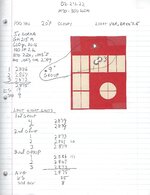Hi Folks,
The last year has been very busy with some major shifts in life and I have only visited the forum sporadically during this period. I feel a little guilty about not keeping up and I see the forum has been updated. I hope I can post this correctly.
During the holidays I acquired a left-handed Win. M70 Sporter Classic III chambered in 300 WSM. I had the receiver pillar and glass bedded and shot up some ammo left over from 2019 that I had loaded for a MRC-X3 rifle. The results with Reloder 16 and 180 gr. AB's have been very good. The first five groups I shot with various bullets jumps from .030" to about .105" were all less than 1" groups.
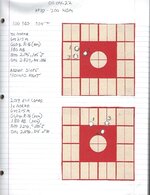
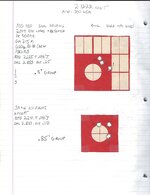
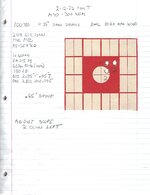
The two best groups at around .65" had a BTO (base-to-ogive) measurement of 2.195". The cases for the ammo for the above targets was all sized for a different rifle and some of the bullets had been reseated. So, I thought they were very encouraging and hoped to better them with some handloading work.
I sized up some brass for this chamber and loaded up some rounds with a different lot of bullets. I tried to duplicate the BTO of 2.195" and .010" less and .010" more.
Starting with a clean barrel and shooting the loads with a BTO of 2.195" I shot the first three bullets into one ragged hole. But then shot four went 1.3" left and shot five was .5" left of the first three.

I was very surprised by shot 4 and wondered if it could have been the wind. Then I shot the next loads with a BTO of 2.205" and achieved only a 1.3" group size with a shifted P.O.I. I was very surprised at the relatively poor group.
Lastly, I shot the loads with a BTO of 2.185" and achieved a group size of .55" - very much more in line with what I expected. However, the P.O.I. was shifted a full inch to the left from the first three shots.
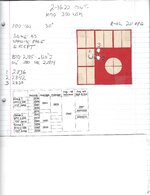
I cleaned the barrel last evening and overnight with Wipe-Out. This morning I checked the bore with a digital bore scope and found what appears to be a brass chip embedded about six inches from the bore.
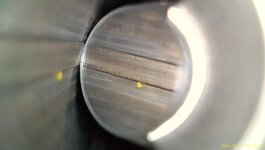
I am guessing that the was chip was from a neck trimming and de-burring operation that had inadvertently been left in the cartridge. I am further guessing that the chip was deposited in the bore during the third shot. It then affected the next five shots and then stabilized for the last three shots producing the .55" group shifted one inch to the left.
Does this rational make any sense? Has anyone else seen something like this? Are there other explanations for what I saw yesterday? I appreciate your thoughts.
Dan
The last year has been very busy with some major shifts in life and I have only visited the forum sporadically during this period. I feel a little guilty about not keeping up and I see the forum has been updated. I hope I can post this correctly.
During the holidays I acquired a left-handed Win. M70 Sporter Classic III chambered in 300 WSM. I had the receiver pillar and glass bedded and shot up some ammo left over from 2019 that I had loaded for a MRC-X3 rifle. The results with Reloder 16 and 180 gr. AB's have been very good. The first five groups I shot with various bullets jumps from .030" to about .105" were all less than 1" groups.



The two best groups at around .65" had a BTO (base-to-ogive) measurement of 2.195". The cases for the ammo for the above targets was all sized for a different rifle and some of the bullets had been reseated. So, I thought they were very encouraging and hoped to better them with some handloading work.
I sized up some brass for this chamber and loaded up some rounds with a different lot of bullets. I tried to duplicate the BTO of 2.195" and .010" less and .010" more.
Starting with a clean barrel and shooting the loads with a BTO of 2.195" I shot the first three bullets into one ragged hole. But then shot four went 1.3" left and shot five was .5" left of the first three.

I was very surprised by shot 4 and wondered if it could have been the wind. Then I shot the next loads with a BTO of 2.205" and achieved only a 1.3" group size with a shifted P.O.I. I was very surprised at the relatively poor group.
Lastly, I shot the loads with a BTO of 2.185" and achieved a group size of .55" - very much more in line with what I expected. However, the P.O.I. was shifted a full inch to the left from the first three shots.

I cleaned the barrel last evening and overnight with Wipe-Out. This morning I checked the bore with a digital bore scope and found what appears to be a brass chip embedded about six inches from the bore.

I am guessing that the was chip was from a neck trimming and de-burring operation that had inadvertently been left in the cartridge. I am further guessing that the chip was deposited in the bore during the third shot. It then affected the next five shots and then stabilized for the last three shots producing the .55" group shifted one inch to the left.
Does this rational make any sense? Has anyone else seen something like this? Are there other explanations for what I saw yesterday? I appreciate your thoughts.
Dan
Last edited:


